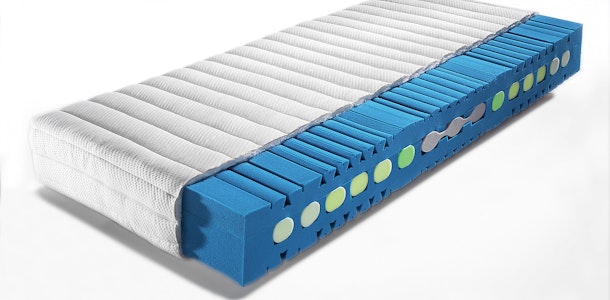Description
In physically hardening, solvent-based adhesives, the bonding substances, also called binding agents, are dispersed in an organic solvent. When the solvent evaporates, the adhesive changes from liquid to its final solid form – the pure bonding substance remains.
The function of the relatively highly volatile solvents is to facilitate an easy transport and application of the adhesive: They ensure that the binding agents stays liquid and can therefore be processed. In addition, the solvents also influence key adhesive characteristics such as adhesion, by promoting the wetting of the substrate or by biting the substrate surface, or dwell time and open time, depending on how fast they evaporate.
Jowat has developed the Jowatac® systems to reduce the flammability of the adhesive and the amount of volatile organic compounds (often also called VOC) released into the environment. The Jowat portfolio therefore provides a wide range of adhesives from general-purpose products to special formulations.
Jowatac® CR adhesives
成分:氯丁二烯,易燃
Jowatac® SC adhesives
成分:苯乙烯共聚物,易燃
成分:苯乙烯共聚物,易燃
成分:苯乙烯共聚物,易燃
Jowatac® SBS adhesives
成分:苯乙烯共聚物,不易燃
Jowatac® 水性粘合剂
成分:聚氨酯,易燃
应用
Product series, characteristics and applications
Jowat® CR adhesives
Basis: Polychloroprene rubber
Characteristics: Chloroprene rubber (CR) adhesives are characterised by an immediate initial strength which provides a major benefit in applications with fast downline processing or for when vertical surfaces have to be bonded. To ensure the highest possible initial strength, the dwell time should be long enough until the adhesive layer is dry to the touch. The bond is formed immediately as soon as the two substrates coated with a touch-dry film of CR adhesive (also called contact adhesive) are then shortly pressed together with high pressure. The adhesive will keep its ability to form a bond upon contact for a limited time after the solvents have evaporated.
In many cases, completely dry adhesive films can be reactivated with solvents or by heat. When the adhesive is reactivated by heat, the timing and location of adhesive application incl. drying and of the actual joining process can be independent of each other, facilitating a precoating of the bonding partners.
Supply form: liquid, bucket, hobbock, drum, IBC
CR adhesives provide the following benefits:
- many different applications
- very high initial strength
- wide range of adhesion to different materials
- high heat resistance
Jowatac® SC adhesives
Basis: Styrene copolymer rubber
Characteristics: Solvent-borne adhesives based on styrene copolymers (often also called SBS or SIS adhesives) are generally applied with spray guns, and are characterised by a good spraying performance and a relatively high solids content. For this group of adhesives, one or both substrates can be coated. A major part of the solvents already evaporate during spraying which leads to a huge increase in the viscosity of the adhesive. These adhesives are therefore often used for bonding very porous substrates.
Even when applied in thinnest layers, SC adhesives have comparatively a very high contact tack during their open time. Joining the substrates while there is still a small amount of solvent in the adhesive ensures a proper wetting of the bonding partner and a fast build-up of initial strength even with low pressure or in high-tension bonding. After all solvents have evaporated, there should be no residual tack. The bonded substrates then can be covered with fabrics or other materials, for instance in the production of mattresses and upholstery furniture.
Supply form: liquid, bucket, hobbock, drum, IBC
Classification into
Jowatac® up to 49 % solids content
Jowatac-HighSolid® 50 – 70 % solids content
Jowatac® Super-HighSolid SC adhesives > 70 % solids content
SC adhesives provide the following benefits:
- high initial strength
- excellent tack
- good adhesion to many substrates
- long open time, depending on the formulation
- high solids content possible
- high content of renewable raw materials
- often economical adhesive group
- easy handling due to application by spraying
Jowat® PU adhesives
Basis: Polyurethane
Characteristics: Solvent-borne contact adhesives based on polyurethane (PU or PUR) are characterised by resistance to plasticisers and good adhesion to the most different materials (except bare metal). Therefore they are used for bonding soft PVC to each other as well as to many other materials. Similar to CR adhesives, they can also be reactivated by heat (e.g. in vacuum deep-drawing methods for the lamination of formed parts with flexible top layers).
To achieve good heat and plasticiser resistances, the adhesive is usually mixed with 3 – 7 % crosslinking agent before processing. The immediate strength is built up by physical hardening while the final strength is achieved by chemical crosslinking (final strength after approx. 3 – 5 days).
Supply form: liquid, bucket, hobbock, drum, IBC
PU adhesives provide the following benefits:
- very soft adhesive seam
- high heat resistance and good resistance to plasticisers when mixed with crosslinking agent
- very good ageing resistance of the adhesive




